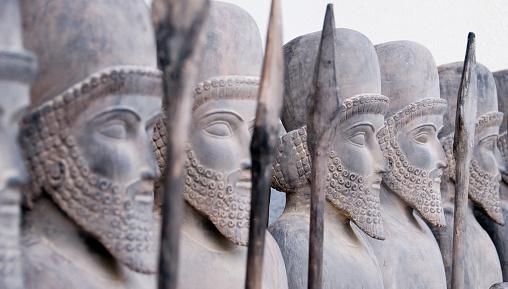Ancient Military Strength: Myths and Reality
Ancient Chinese soldiers' physical fitness came not only from protein intake but from systematic military training, balanced nutrition from diverse sources, and selective recruitment of career warriors within specific social classes.

The physical prowess of ancient soldiers has long captivated historians and military enthusiasts. While popular belief suggests ancient armies routinely fielded hundreds of thousands of elite warriors despite limited meat consumption, historical evidence paints a more nuanced picture.
Archaeological findings from Han Dynasty China reveal that professional soldiers and aristocratic warriors did maintain relatively good nutrition. Excavated human remains indicate regular consumption of meat among certain social classes. However, this was not universal across the entire military.
The backbone of elite ancient forces typically came from three sources. First were hereditary military families who passed down combat skills and training methods through generations. Second were aristocratic warriors who received martial education from youth. Third were career soldiers specifically selected and maintained by the state. These groups received better provisions and systematic training compared to common conscripts.
Professional ancient warriors supplemented their protein intake through various sources beyond meat. Legumes, dairy products, and eggs provided substantial protein. Ancient Western gladiators, for instance, maintained impressive physiques primarily on grain and bean-based diets. Modern Indian wrestlers demonstrate similar capabilities while adhering to vegetarian diets.
Training played an equally crucial role. Surviving records indicate rigorous year-round physical conditioning. The Han military selection standards detailed in historical texts required candidates to demonstrate strength by drawing heavy bows, wearing full armor, and conducting forced marches while carrying equipment. While some accounts may be embellished, the basic training principles were sound.
However, claims of fielding hundreds of thousands of elite troops simultaneously are likely exaggerated. Even in early modern Europe with better nutrition, armies struggled to maintain large numbers of high-quality soldiers. Records from the Ming Dynasty reveal that out of 80,000 troops on paper, commanders considered only 3,000 truly combat-effective.
The reality was that most large ancient armies consisted primarily of hastily trained conscripts of varying physical condition, supplemented by a core of professional warriors who received better provisions and training. While these elite units could achieve impressive physical standards, they represented a small percentage of total military strength.
Modern research suggests ancient martial effectiveness relied more on systematic training, balanced nutrition from diverse sources, and selective recruitment of career warriors than on massive armies of universally superior soldiers. The historical evidence points to quality over quantity when it comes to ancient military excellence.